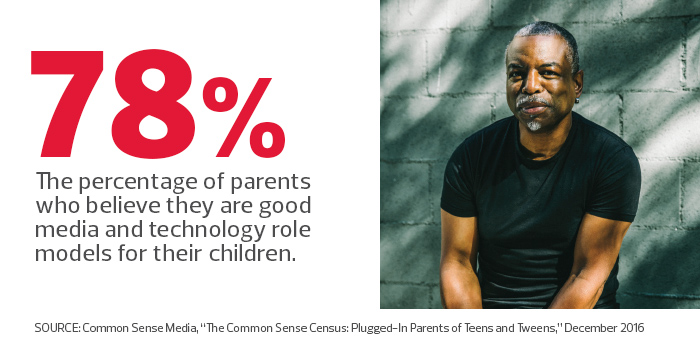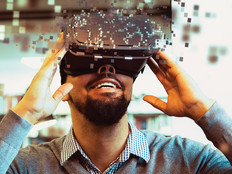LeVar Burton: Digital Devices Can Embrace Storytelling
Before LeVar Burton was Kunta Kinte in the 1977 TV miniseries Roots or host of the long-running and much-loved PBS children’s show Reading Rainbow, he was a little boy watching his mother read piles of books in their California home.
It was that scene that would spark in the actor a lifelong passion for storytelling. After completing 26 seasons of Reading Rainbow, Burton is still evangelizing about the power of literacy. He travels the country speaking to countless conferences and schools and has made it his mission to turn kids into lifetime readers like his mom.
EdTech: Focus on K–12 Managing Editor Jena Passut chatted with Burton about his roots in reading and how he sees technology as a catalyst for education.
SIGN UP: Get more news from the EdTech newsletter in your inbox every two weeks!
EDTECH: What first sparked your interest in literacy? How has it evolved into your life’s work?
BURTON: My mother, Erma Gene Christian, first sparked my interest in literacy. She was an English teacher, and in addition to reading to my sisters and me when we were children, she always had at least two or three books going for her own personal enjoyment. I always saw my mother reading. I got the example from my mother that reading is an important part of the human experience. She really is the first of whom I consider to be my storytelling mentors.
The others are Alex Haley [author of Roots], Gene Roddenberry [creator of Star Trek] and Fred Rogers [star of Mister Rogers’ Neighborhood].
I studied earlier in my life for the priesthood, but I consider that this mission that I have been on for more than 30 years is my life’s work.
It has all been in honor of my mom.

EDTECH: How does your passion for education inform your daily life?
BURTON: I am a reader! Reading for me is a badge of self-identification. You’re either a reader or you’re not; and when you’re a reader, you read for pleasure, because you get that it is a way to expand yourself.
My goal, my passion, is to turn kids who know how to read into readers. And not just readers, but readers for life. If you’re a reader for life, then you’re a learner for life. And if you’re a learner for life, you are the definition of what I consider to be a dangerous individual, which is somebody who doesn’t have to take anybody else’s word for it. You have the wherewithal to put in the work, do the research and inform yourself about whatever it is that you need to be informed about.
EDTECH: Can you tell us how you brought Reading Rainbow back to the masses? (Thank you for that, by the way.)
BURTON: In 2009, PBS took Reading Rainbow out of its Ready to Learn lineup. It was, in effect, canceling the show. It was a signal to the PBS stations across the country that Reading Rainbow was no longer considered a priority piece of programming for them. While PBS and WNED valued it, they were ultimately restricted by government mandates.
I’m a firm believer in the idea that when one door closes, another one opens. I saw the cancellation of Reading Rainbow as an opportunity. I had been wanting to become more intimately involved with the decision-making with the brand. So, my business partner and I marshaled our resources and created a pathway that gave us an opportunity to hire a team to develop the Reading Rainbow Skybrary, which we released in the summer of 2012 and is a registered trademark.
We knew that we could use the technology of television to create a relationship between children and literature. The question was, could we use this new and engaging technology in the same way? That was the concept that we were trying to prove.
Very quickly, the Reading Rainbow app shot to the top of the ratings in the iTunes App Store, and five years later, thanks to a lot of hard work by a team of dedicated people and a very successful Kickstarter campaign, we are available across a multitude of platforms.
We are also available on the web at readingrainbow.com. And thanks to Kickstarter, we also have a product developed specifically for schools that teachers can use in the classrooms with emerging readers. I am pretty proud of what we continue to do.
EDTECH: How does educational technology fit into the Reading Rainbow sphere?
BURTON: We’re all about using technology. Television was simply the technology we used back in the day. If you want to reach kids today, you need to be on the digital devices that they want to be on. We are all about utilizing technology to engage kids, and we know from experience, from five years of data, that it works. Kids come to the Skybrary to read and to watch our educational video field trips. They feel it’s a world they want to be in, and that’s what we want.

EDTECH: Former Secretary of Education Arne Duncan once challenged schools to embrace digital textbooks. How did the Reading Rainbow Skybrary take advantage of that directive?
BURTON: Well, I have to say that the app predates the good secretary’s directive. We are not textbooks, though. We are children’s books. We have fiction and nonfiction. The app does not teach kids how to read. We are about the love of literature and the love of the written word. It’s an important distinction. We are there to supplement how kids interact with literature. We are not there to teach them the rudiments of reading; that is done by other people. We are there to help them become readers for life.
EDTECH: Is there a place for gamification in K–12 education?
BURTON: Yes, there is. Every culture has a tradition of storytelling. We can teach our children anything, and we can streamline that process by taking the information we want them to learn — math, science, history, language — embed it in storytelling and put those stories on these very engaging digital devices.
Here’s where gamification comes in: If we add layers of gamification — say, a reward system, some leveling up, some incentive to complete the storytelling curriculum — we can teach kids anything we choose, and in a single generation turn around our educational quagmire. That is my belief, and I further believe that if we fail to do that, to use this very engaging technology in the service of educating our children, we will have missed one of the largest opportunities in the modern era for humankind.
Note: Reading Rainbow® and its logo are registered trademarks of Western New York Public Broadcasting Association (WNED-Buffalo) and used with permission. Skybrary® is the registered trademark of RRKidz Inc.








